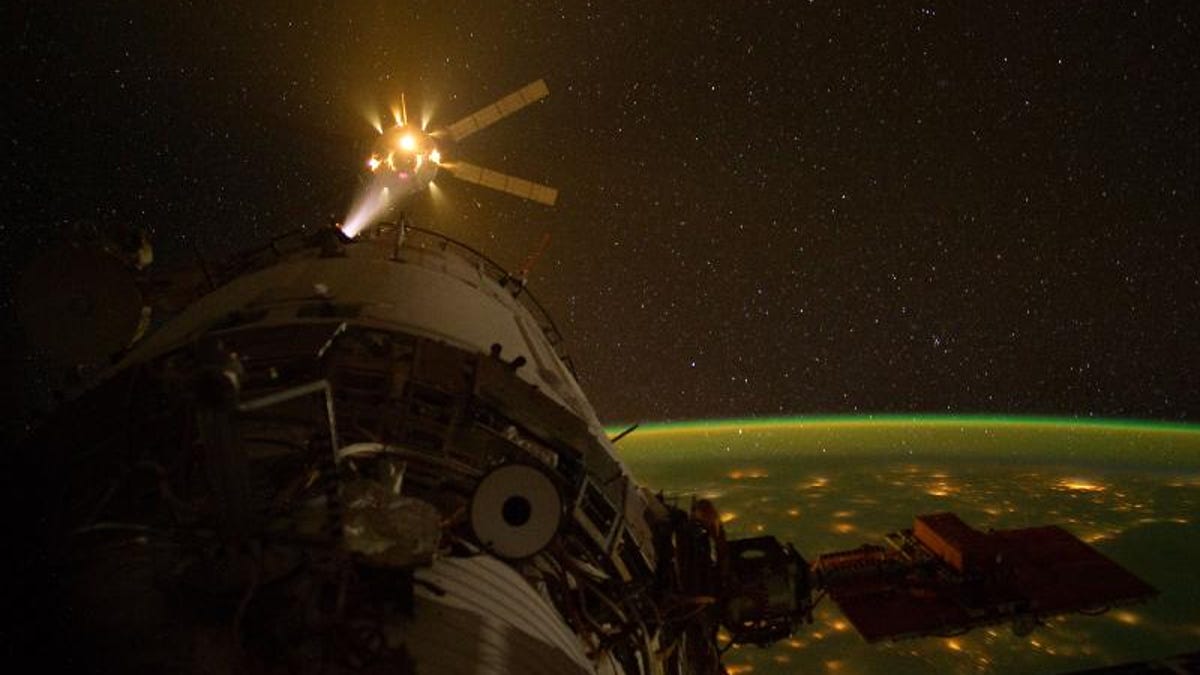Space station snaps photo of robotic cargo craft
Photo taken from the International Space Station shows the approach of European Space Agency's cargo spacecraft approaching for an automated docking and delivery of vital supplies.

NASA has released an image of a robotic spacecraft approaching the International Space Station, showing how the delicate operation looks from space.
The European Space Agency's Automated Transfer Vehicle-3 (ATV-3) is an unmanned cargo spacecraft that delivered tons of supplies late last month. It brought 220 pounds of oxygen, 628 pounds of water, 4.5 tons of propellant, and nearly 2.5 tons of dry cargo, such as spare parts, food, clothing, and hardware for experiments.
The image shows the ATV-3 approaching from what seems to be a close distance as the International Space Station shines a light onto it. The light shows the ATV-3's solar arrays that power the craft.
The photo also provides a view from outside the ISS of space right above the Earth's atmosphere and of the curvature of the Earth.
The ATV-3 is a 20-ton, cylinder-shaped craft that can automatically dock using high-precision navigation systems and a collision-avoidance system with its own power supplies, control, and dedicated thrusters, according to the European Space Agency.
It's expected to be attached to the ISS for six months before detaching and deliberately burning up, along with several tons of trash, when reentering the atmosphere.
NASA said the ISS crew stayed up late to monitor the ATV-3's approach and docking.

